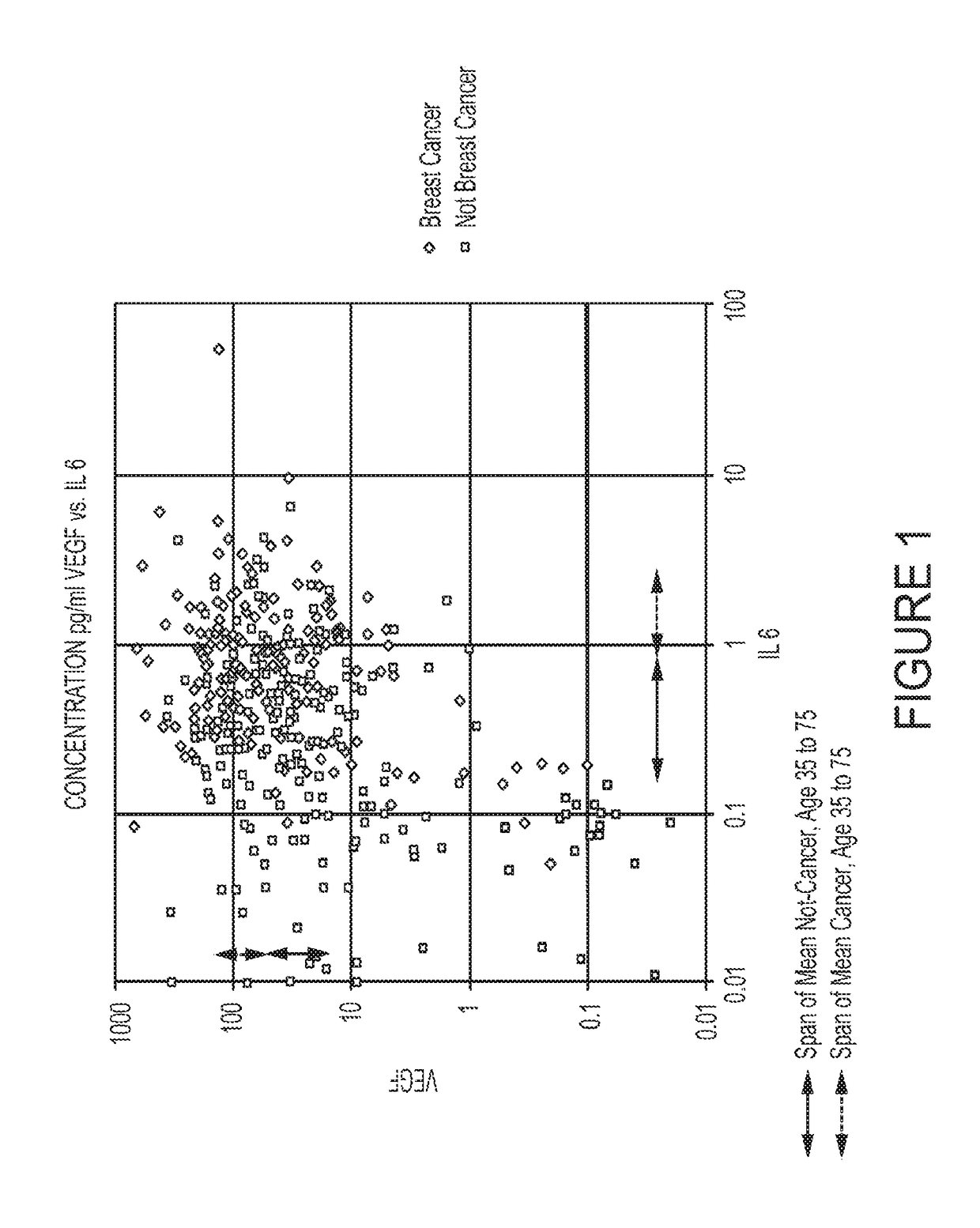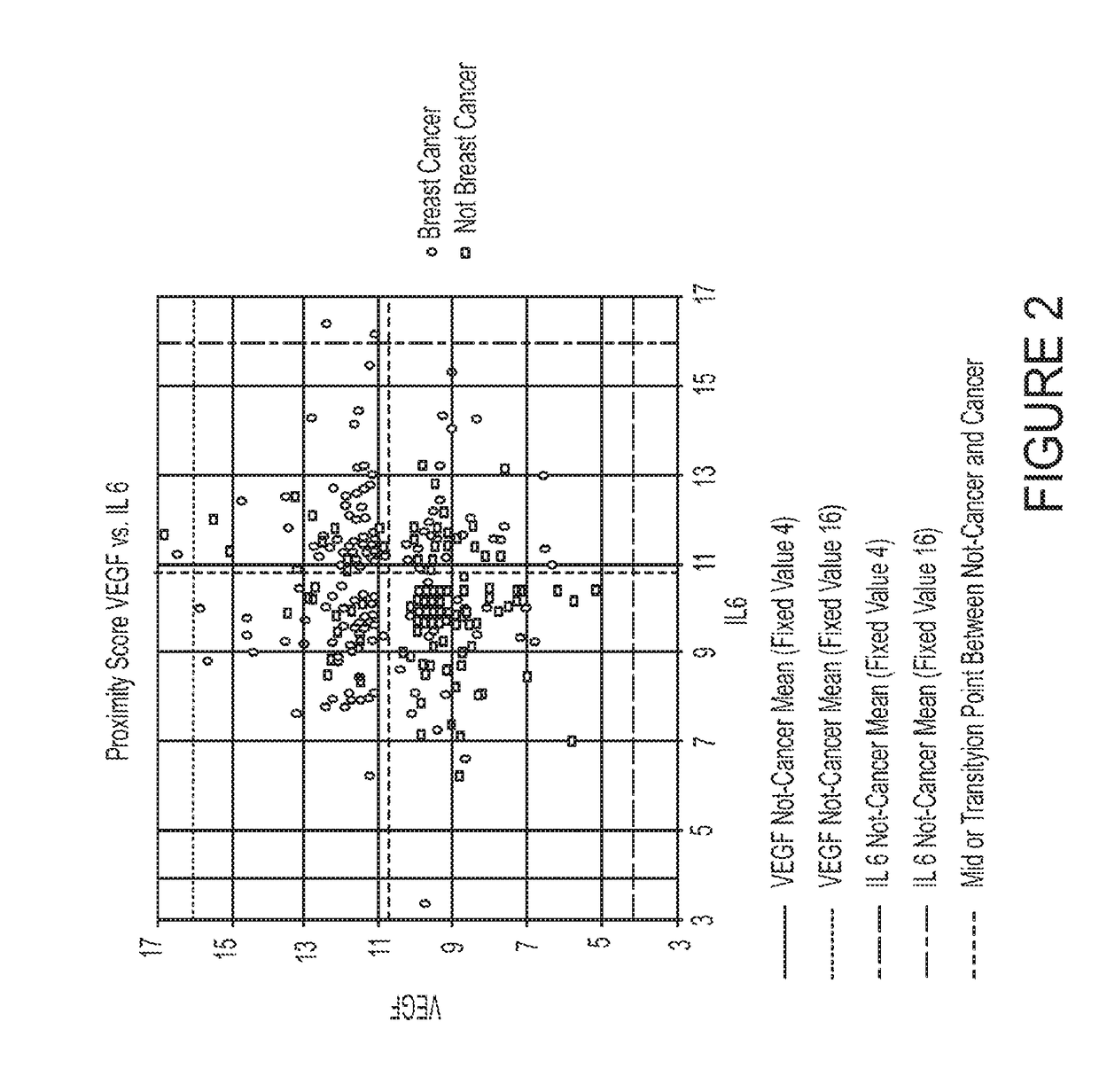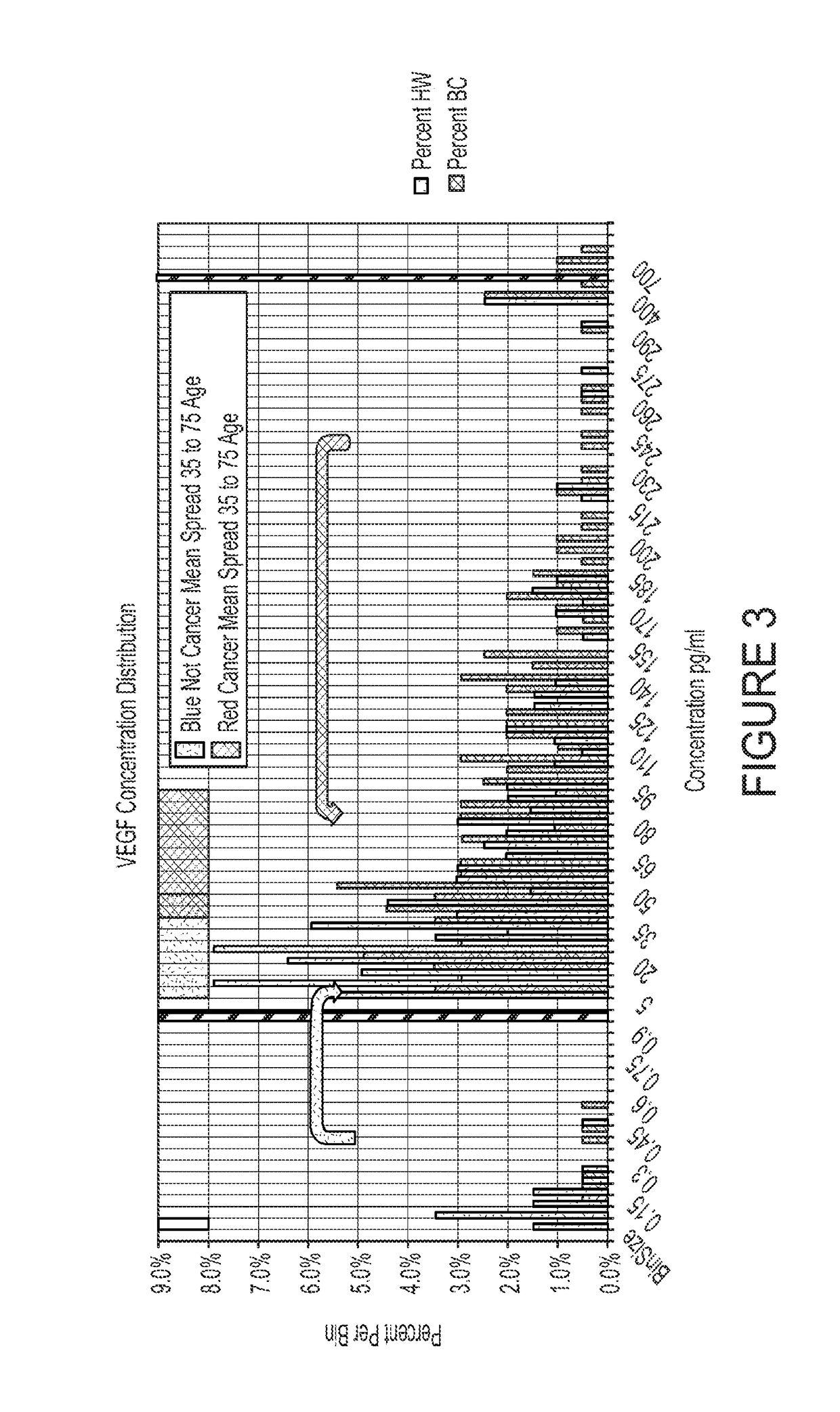Systems and methods for improving diseases diagnosis
a disease and disease technology, applied in the field of systems and methods for improving disease diagnosis, can solve the problems of insufficient usefulness and non-existence of parameters, inability to fully determine the accurate values of disease or non-disease, and limited accuracy of these parameters, so as to achieve more accurate separation
- Summary
- Abstract
- Description
- Claims
- Application Information
AI Technical Summary
Benefits of technology
Problems solved by technology
Method used
Image
Examples
Embodiment Construction
[0051]In describing a preferred embodiment of the invention illustrated in the drawings, specific terminology will be resorted to for the sake of clarity. However, the invention is not intended to be limited to the specific terms so selected, and it is to be understood that each specific term includes all technical equivalents that operate in a similar manner to accomplish a similar purpose. Several preferred embodiments of the invention are described for illustrative purposes, it being understood that the invention may be embodied in other forms not specifically shown in the figures.
[0052]For the purposes of this application, for ease of understanding, the following definitions are utilized:
[0053]“Analyte” refers to the chemical compound of interest for measurement. In a proteomics case, an analyte is a protein, and the method of measurement is usually an immunoassay. The unit of measurement is the concentration noted in mass units per unit volume of the biological fluid or tissue ...
PUM
 Login to View More
Login to View More Abstract
Description
Claims
Application Information
 Login to View More
Login to View More - R&D
- Intellectual Property
- Life Sciences
- Materials
- Tech Scout
- Unparalleled Data Quality
- Higher Quality Content
- 60% Fewer Hallucinations
Browse by: Latest US Patents, China's latest patents, Technical Efficacy Thesaurus, Application Domain, Technology Topic, Popular Technical Reports.
© 2025 PatSnap. All rights reserved.Legal|Privacy policy|Modern Slavery Act Transparency Statement|Sitemap|About US| Contact US: help@patsnap.com



